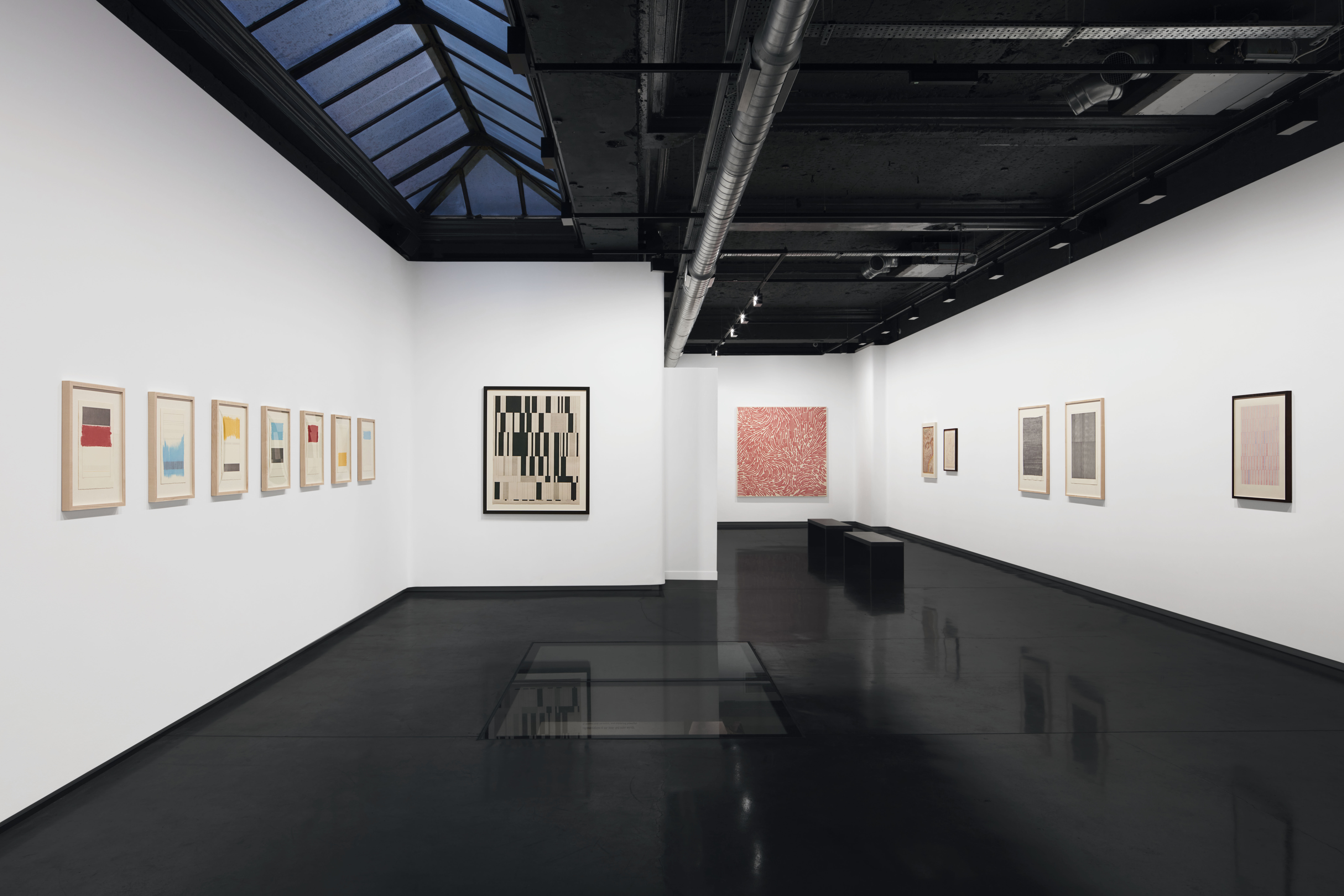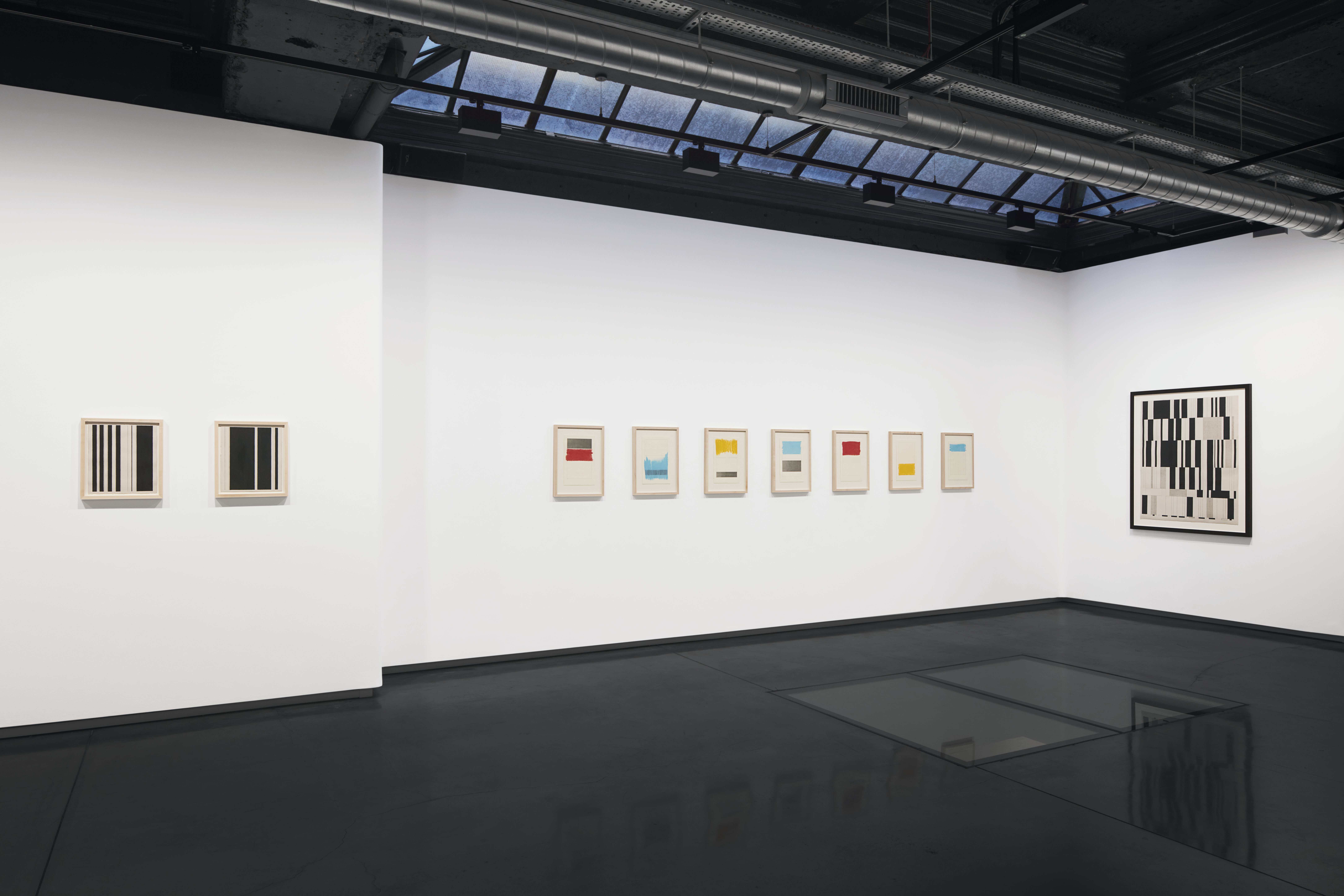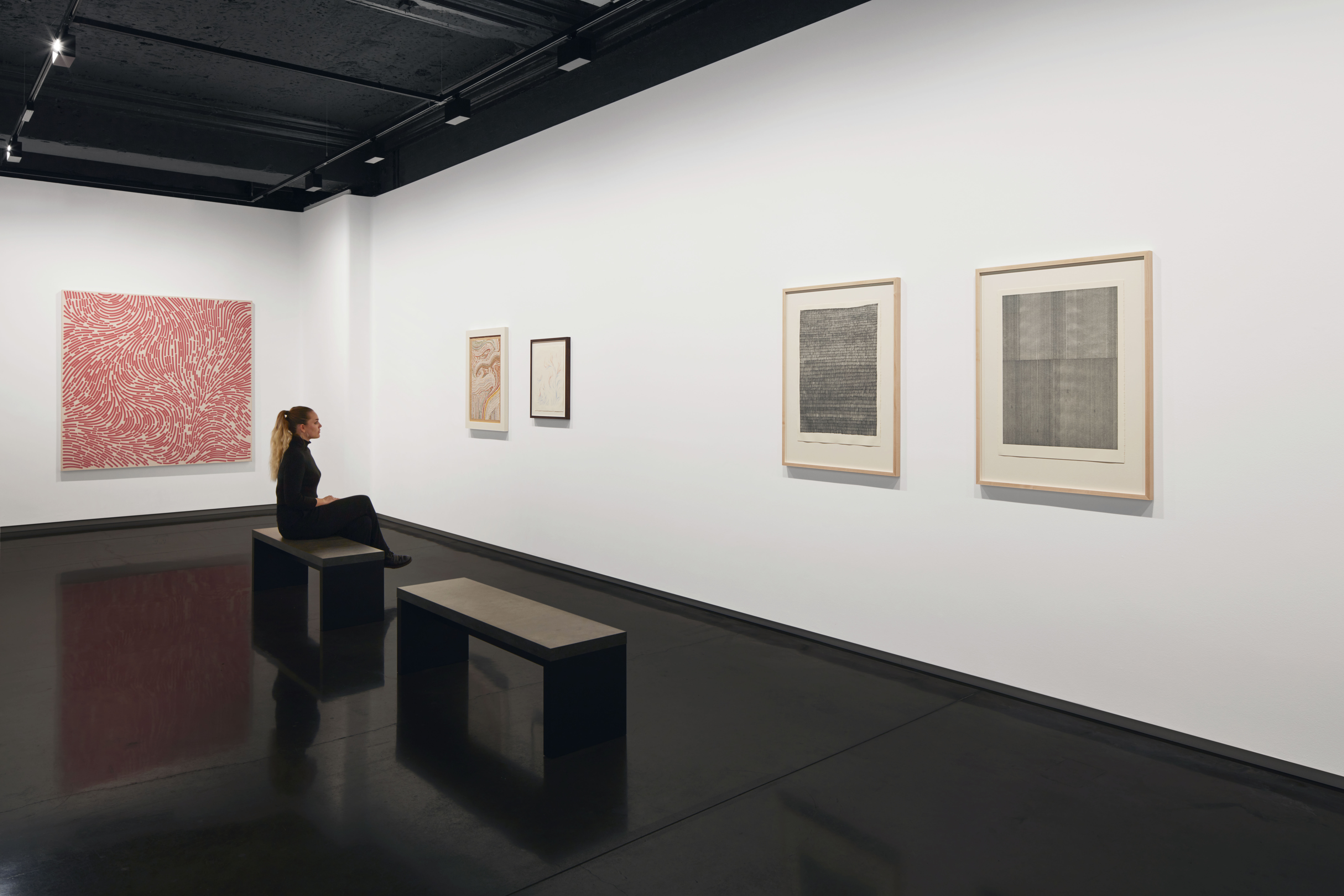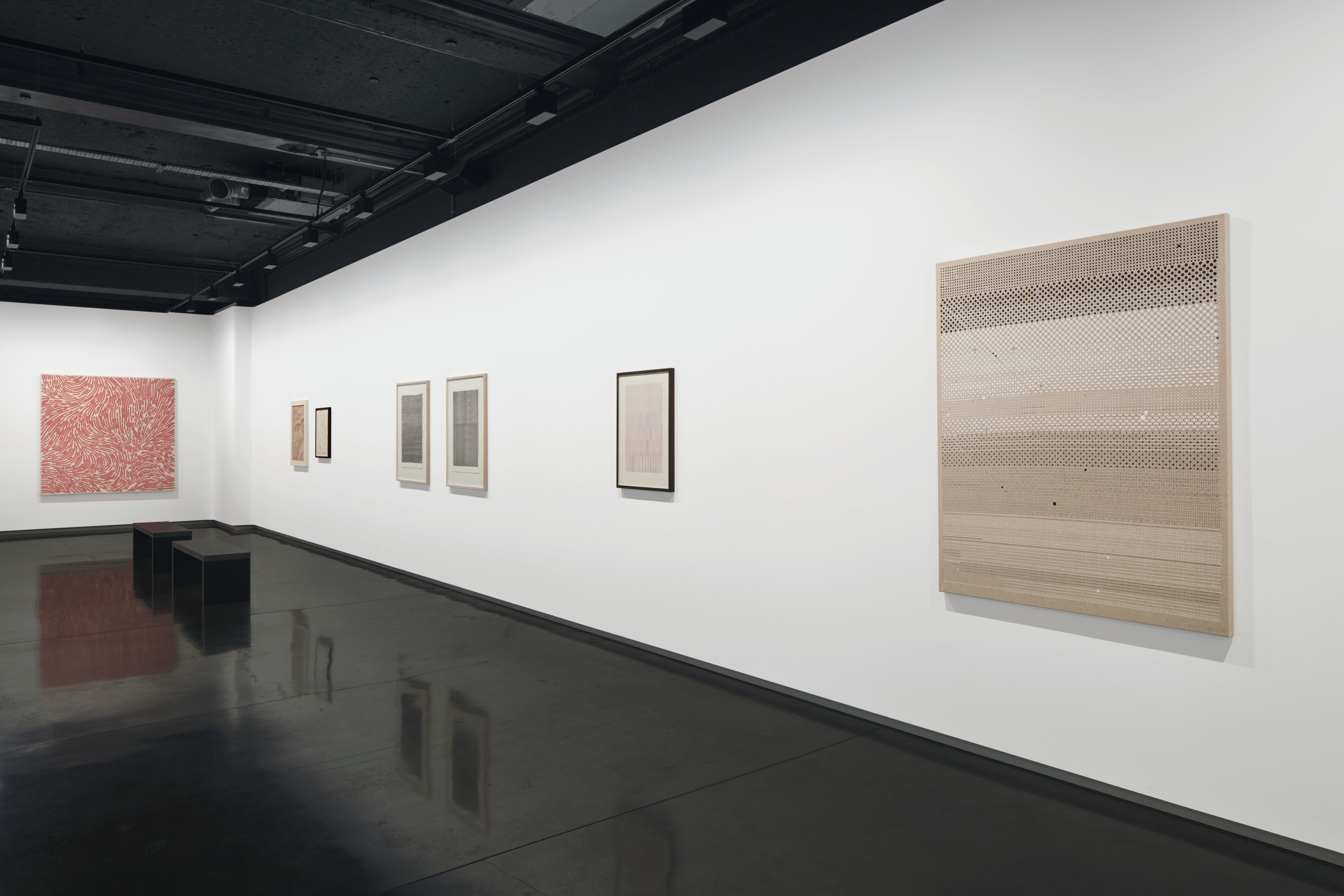Mechanical Hand, Tyler Hobbs’ first solo exhibition with Unit London explores the interactions between man and machine, digital and analogue, and computer-driven and hand-made creations. Hobbs states that as our lives become increasingly digital ‘there is an imperative for artists to help us develop a healthy relationship with computers – to help us build beautiful things.’
Systems are at the crux of Hobbs’ practice. He is a generative artist, meaning he uses autonomous systems to inject randomness into his pieces. In Hobbs’ work, this could include anything from building an algorithm that assigns randomised probabilities to the features in the images it produces such as in Return Zero (2021) to using his hand to execute a methodical, mechanical pattern such as in Inevitable Triumph (2020).
This show aims to expand viewers’ understanding of Generative Art. As a movement, its reliance on systems has resulted in a widespread misconception that Generative Art is always digital and created by algorithms, but Hobbs’ work highlights some of the ways that systems can be integrated into analogue works. Amongst his influences, are artists such as Cy Twombly and Richard Diebenkorn whose practices were exclusively analogue but who often cultivated a generative mindset and created pieces with vivid systemisation.
Then there are influences like Sol LeWitt, the pioneer of conceptual art, whose body of Generative work is widely acknowledged. His Wall Drawing no1118 for instance provided instructions that urged museum-goers to take a pencil to the wall in front of them, place 50 random points across it, and connect these points with straight lines.
Hobbs reflects that like the digital versus analogue dichotomy, Generative Art is not a category with hard boundaries. Instead, it is a spectrum that he describes as more about ‘the methodology and mindset of the artist than anything else.’
Whether drawing over patterns that plotters (robotic arms directed by computers) have produced such as in By Proxy Blue (2021), or hand-painting designs generated by the algorithms he builds such as in Aligned Movement (2020), Hobbs frequently works in a hybrid manner, crossing and recrossing the physical, digital barrier multiple times and in multiple ways.
To view his work is to engage in the art of discernment, as the eye starts to identify details that are either machine or man-made. In many instances, his work highlights the subtle differences that emerge in phenomena as seemingly simple as a line drawn with a pencil. In other cases, however, distinguishing between what is machine-made and what is human-made becomes more challenging. In these moments, the dichotomy between digital and analogue starts to unravel, and in its place emerges a sense of creative collaboration between Hobbs, and computers and machines.
‘I want people to wonder how the pieces are created and what was by hand and what is by computer, and what are those tell-tale signs,’ he says. ‘A lot of my work exists in that ambiguous space between the two.’
One of the most distinctive characteristics of the machine or computerised features is a level of precision that would be almost impossible to achieve organically. If the technological inputs embody order, however, the human inputs embody chaos, injecting a sense of freedom and spontaneity that algorithms and plotters struggle to achieve. This contrast can be observed most clearly in the sister pieces Fulfilling System 1 and Fulfilling System 2 (2020). In this series, Hobbs designed and executed a system for covering the sheet of paper with rows of graphite, but one is created by hand and the other with a plotter. In many ways the outcome is surprising – yes, the plotter is more precise, but amongst such exactness the imperfections are more pronounced, reminding us of the ways that machines, like humans, err. Here the practice of Agnes Martin comes to mind and her meticulously ordered geometry that co-existed in harmony with the imperfections of the human hand. Referring to Martin’s work for inspiration for many years, Hobbs too embraces the fact that it is the quivering nature of human presence that leaves the viewer with a quiet feeling of introspection.
The series reflects on how machines and humans create differently, utilising systems in divergent but complementary manners. As well as highlighting the distinction between man and his machines, Hobbs’ show is a testament to the ways we can successfully integrate the digital into our lives, work, and art in a manner that does not alienate but enrich us.
Watch
Essay by Catherine Mason
Art Historian, Catherine Mason writes:
“Tyler’s work, which is wholly abstract, sits within this tradition. The artist specifies a set of preferences within a system – the output of the system created either by custom algorithm written by the artist (from his mind to code and plotter), or by his hand (from his mind to hand in paint). Whether by hand or natively digital, in many of the artworks Tyler’s unique underlying ‘flow field’ aesthetic can be seen, providing a structure to the image. This results in a very distinctive and recognisable style, with clear bright colours swirling and playing across the surfaces. Other pieces in the show are more contemplative in nature and show a love of texture and fine details, their minimalism repaying a closer look. The beauty of his system behind each work is striking and whatever the output, results in a delicacy of character. This exhibition is about comparing the human, handmade approach to a mechanical process – the artist exploring the tension between the analogue and the digital and his thoughts about the gap between the two.”
Interview
Works
Tyler Hobbs
user_space
2022
114.3 x 91.44 cm (135 x 112 cm framed)
Tyler Hobbs
Return One [Red]
2021/2022
182.88 x 182.88 cm
Tyler Hobbs
Aligned Movement
2020
76 x 57 cm (78 x 102 cm framed)
Tyler Hobbs
Jacquard Legacy
2023
152.4 x 121.92 cm
Request Catalogue
Explore the full selection of artworks, additional curatorial texts and more.
exhibitions, artists and events.



